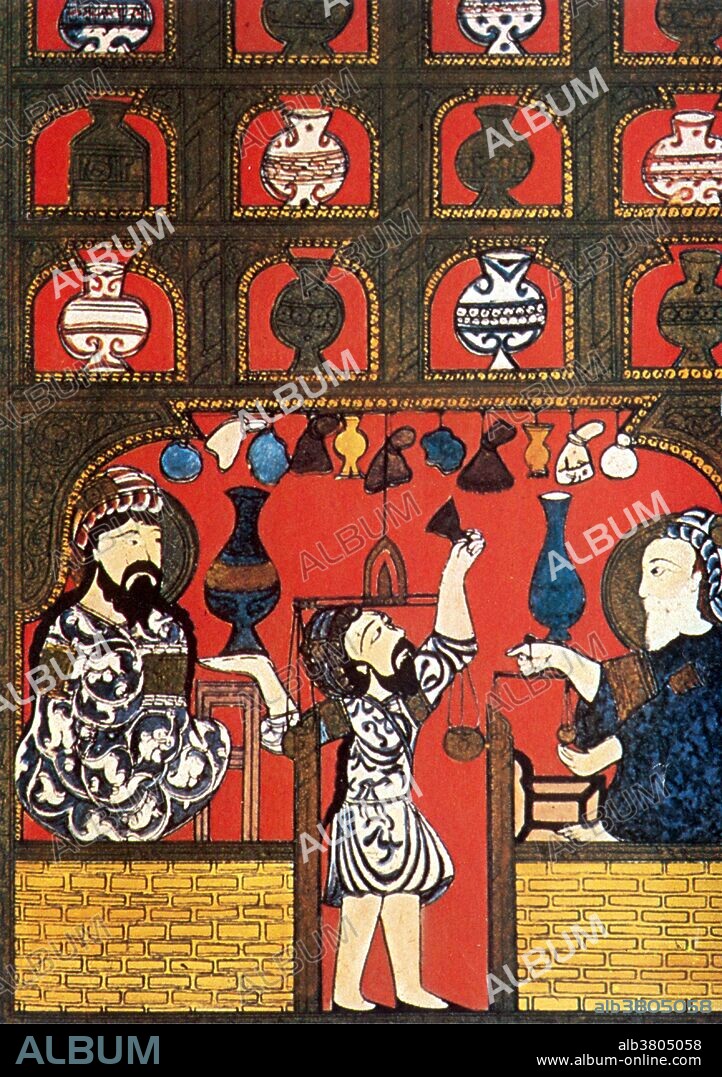alb3805058
Arab Pharmacy, 13th Century

|
Add to another lightbox |
|
Add to another lightbox |



Buy this image.
Select the use:

Title:
Arab Pharmacy, 13th Century
Caption:
The history of pharmacy as an independent science dates back to the first third of the 19th century. Before then, pharmacy evolved from antiquity as part of medicine. In Baghdad the first pharmacies, or drug stores, were established in 754, under the Abbasid Caliphate during the Islamic Golden Age. By the 9th century, these pharmacies were state-regulated. The advances made in the Middle East in botany and chemistry led medicine in medieval Islam substantially to develop pharmacology. Al-Biruni (973-1050) wrote one of the most valuable Islamic works on pharmacology entitled Kitab al-Saydalah (The Book of Drugs), where he gave detailed knowledge of the properties of drugs and outlined the role of pharmacy and the functions and duties of the pharmacist. Ibn Sina (Avicenna), too, described no less than 700 preparations, their properties, mode of action and their indications (Canon of Medicine).
Credit:
Album / NYPL/Science Source
Releases:
Model: No - Property: No
Rights questions?
Rights questions?
Image size:
3175 x 4500 px | 40.9 MB
Print size:
26.9 x 38.1 cm | 10.6 x 15.0 in (300 dpi)
Keywords:
13TH CENTURY • 13TH • APOTHECARY JARS • APOTHECARY • ARAB • ARABIAN • ART • ARTWORK • DRAWING • DRUGGIST • DRUGSTORE • HERBAL MEDICINE • HERBALISM • HERBALIST • HERBOLOGY • HISTORIC • HISTORICAL • HISTORY • ILLUSTRATION • ILLUSTRATIONS • ISLAMIC • MATERIA MEDICA • MEDICAL PROFESSIONAL • MEDICAL • MEDICINAL • MEDICINE • MEDIEVAL • MEN • MIDDLE AGES • MOSLEM • MUSLIM • OCCUPATION • PHARMACIST • PHARMACOLOGY • PHARMACY • POTION • PROFESSION • SCIENCE • SKILLED PRACTIONER • THERIAC • TRADE • XIII CENTURY
 Pinterest
Pinterest Twitter
Twitter Facebook
Facebook Copy link
Copy link Email
Email
